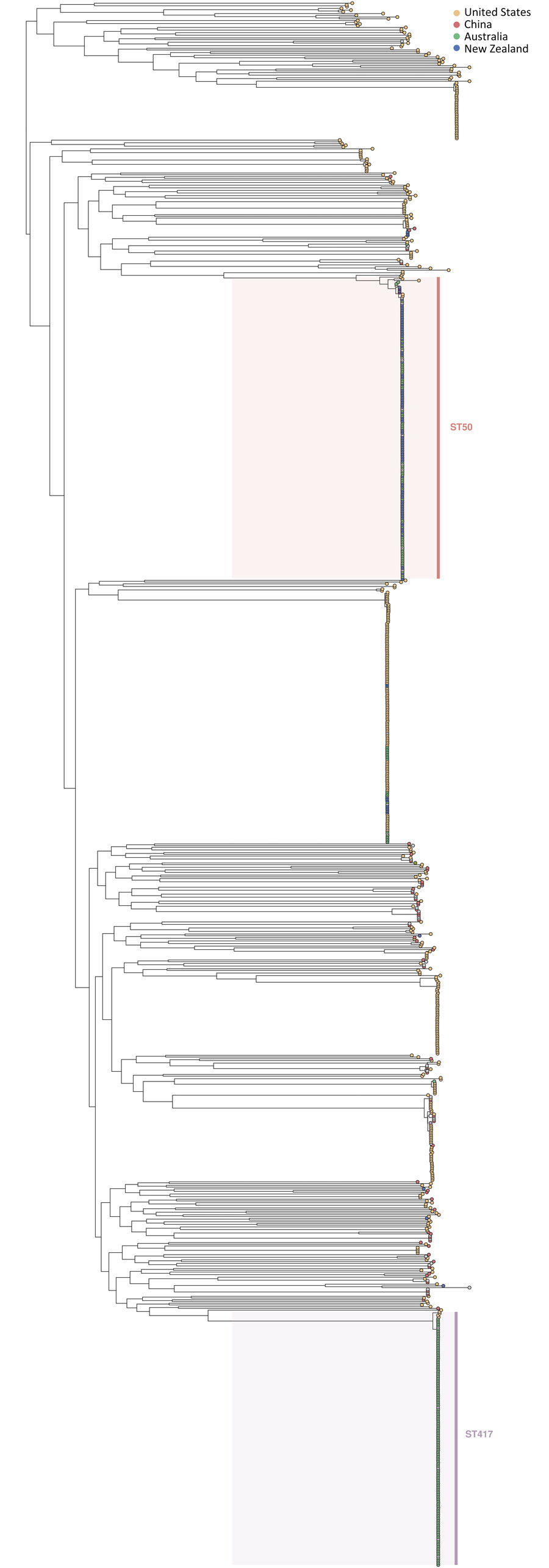Vibrio parahaemolyticus Foodborne Illness Associated with Oysters, Australia, 2021–2022
Emily Fearnley

, Lex E.X. Leong, Alessia Centofanti, Paul Dowsett, Barry G. Combs, Anthony D.K. Draper, Helen Hocking, Ben Howden, Kristy Horan, Mathilda Wilmot, Avram Levy, Louise A. Cooley, Karina J. Kennedy, Qinning Wang, Alicia Arnott, Rikki M.A. Graham, Vitali Sinchenko, Amy V. Jennison, Stacey Kane, and Rose Wright
Author affiliation: South Australian Department for Health and Wellbeing, Adelaide, South Australia, Australia (E. Fearnley, A. Centofanti); University of South Australia, Adelaide (L.E.X. Leong); SA Pathology, Adelaide (L.E.X. Leong, H. Hocking); Department of Primary Industries and Regions, Adelaide (P. Dowsett); Department of Health Western Australia, Perth, Western Australia, Australia (B.G. Combs); Northern Territory Centre for Disease Control, Darwin, Northern Territory, Australia (A.D.K. Draper); The Peter Doherty Institute for Infection and Immunity, Melbourne, Victoria, Australia (B. Howden, K. Horan, M. Wilmont); PathWest Laboratory Medicine, Perth (A. Levy); Royal Hobart Hospital, Hobart, Tasmania, Australia (L.A. Cooley); Canberra Hospital and Health Services, Canberra, Australian Capital Territory, Australia (K.J. Kennedy); Westmead Hospital, Westmead, New South Wales, Australia (Q. Wang); The University of Sydney, Sydney, New South Wales, Australia (A. Arnott, V. Sintchenko); Queensland Health Forensic and Scientific Services, Coopers Plains, Queensland, Australia (R.M.A. Graham, A.V. Jennison); Australian Government Department of Health and Aged Care, Canberra (S. Kane, R. Wright)
Main Article
Figure 2

Figure 2. Phylogeny of Vibrio parahaemolyticus constructed using available pangenomes from the PubMLST database (https://pubmlst.org) and outbreak isolates of ST417 and ST 50. Data informed an investigation of V. parahaemolyticus foodborne illness associated with oysters, Australia, 2021–2022. ST, sequence type.
Main Article
Page created: September 18, 2024
Page updated: October 22, 2024
Page reviewed: October 22, 2024
The conclusions, findings, and opinions expressed by authors contributing to this journal do not necessarily reflect the official position of the U.S. Department of Health and Human Services, the Public Health Service, the Centers for Disease Control and Prevention, or the authors' affiliated institutions. Use of trade names is for identification only and does not imply endorsement by any of the groups named above.
